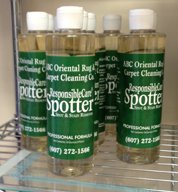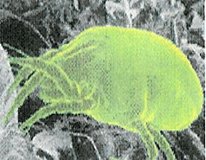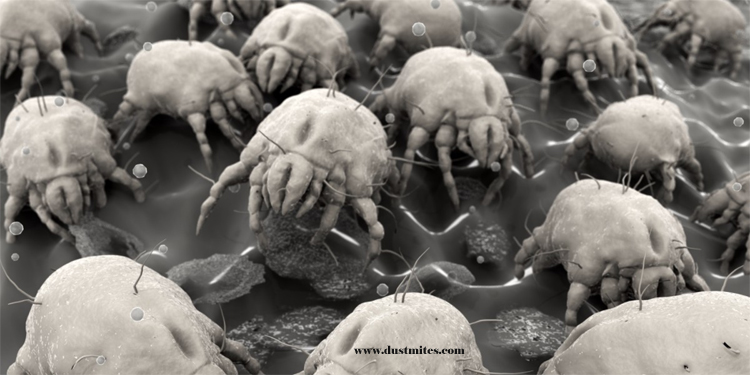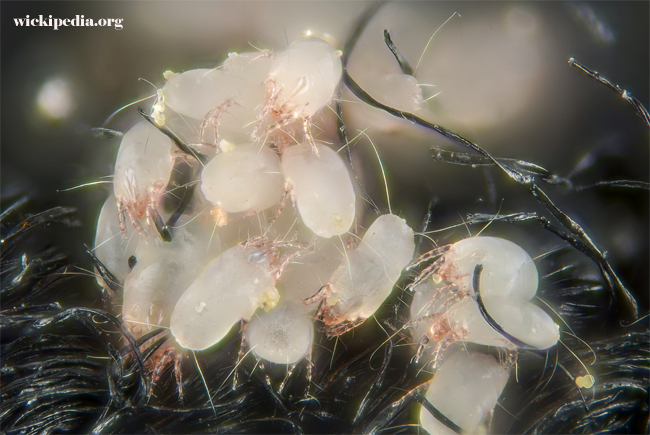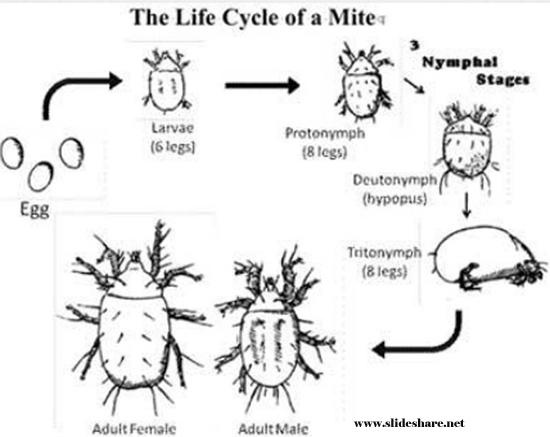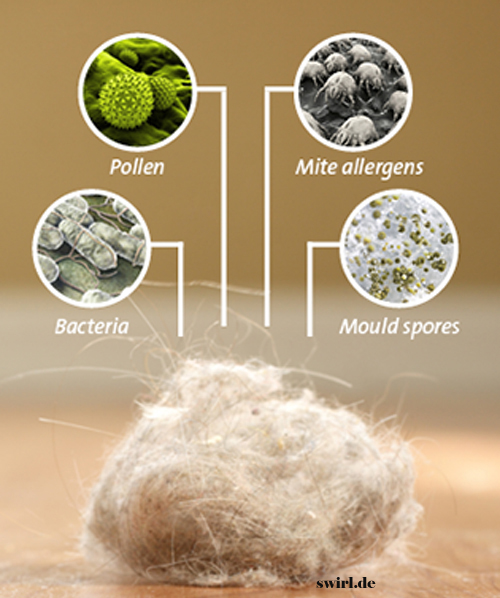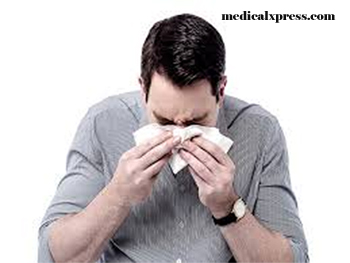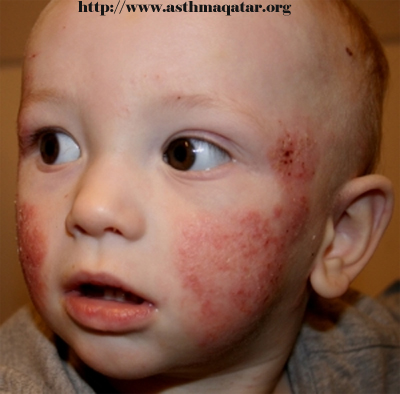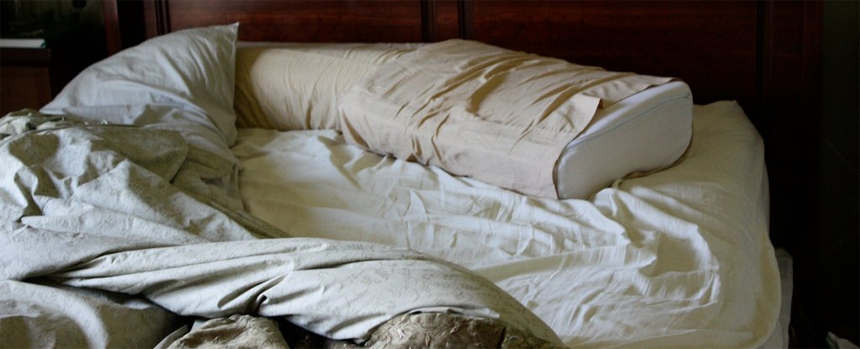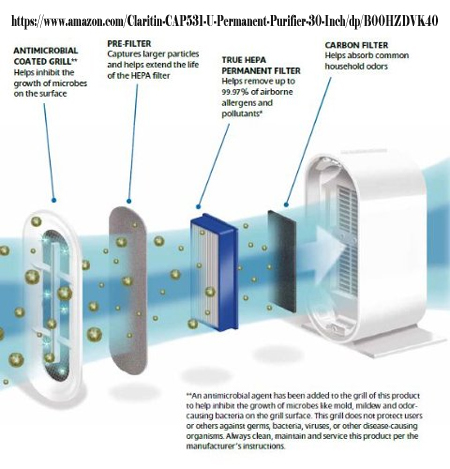DUST MITES
Dust mites, as you probably know, are microscopic creatures that can cause an array of allergy and asthma problems, especially in children and the elderly. But were you aware we have only known about them since the 1960s? And how they cause allergy problems has only been known for certain since 1988, when research findings were confirmed by the World Health Organization (WHO)?
In the 1960s, early researchers in Holland and Japan had theorized that these insects could possibly be a health concern. No one took them seriously. The process to isolate, characterize, and measure an allergen is complicated and composed of many steps.
In the case of these mites, this process took over 20 years!
WHERE DID DUST MITES COME FROM?
Dust mites originated from somewhere near Australia. They were first reported in 1969 in Canada and in 1970 in the USA. By 1980, they started appearing more frequently and by the 1990s they were everywhere.
One explanation for their late arrival may be that our homes prior to the 1950s and 1960s were not tightly sealed and the accumulated house dust with allergens from the mites could escape, not giving them a chance to breed.
WHAT DO DUST MITES LOOK LIKE?
Dust mites are microscopic insects. The adults have 8 hairy legs and are approximately 0.3mm in length. 7000 of these creatures can fit on a single fingernail!
They are oval shaped and do not have eyes or antennae. They have a mouth-shaped body part in front of the body and their shell is hard and translucent.
There are 2 main species. One prefers a warmer temperature
than the other but they are often found living together.
LIFE CYCLE of DUST MITES
Mated females can lay as much as 60 to 100 eggs at a time, usually in small groups of 3 to 5. A 6-legged larva will emerge first. The 8 legged nymph will appear after the first molt. It takes about 1 month for the 8-legged adult to appear.
A male has an average life cycle of 10 to 19 days, while a mated female can last as much as 70 or more days.
It is important to note that dust mites cannot drink and depend on the moisture in the air to survive and breed. During times and areas of low humidity, they tend to band together to try to decrease the surface area of their bodies that are exposed to the air so they will lose less water. If the humidity gets too low, as in winter, the young mites or nymphs will go into hibernation until the humidity rises again.
They can
be found in all climates, but warmer, more humid ones will attract a
larger number of them. And it is no wonder they choose warm, moist areas such as mattresses and pillows when someone is sleeping on them.
WHAT DO DUST MITES EAT?
Dust mites only eat dead tissue and thus are not parasites like other insects. They eat bits of protein they find in the fibers of beds, pillows, carpets, and soft furniture, and can even be found in cars.
Our dead skin cells and those of our animals are their primary food source but they can also live off such items as pet food, cereals, crumbs, fish flakes, and even in birds' nests and in stored grain and straw in barns.
DO DUST MITES BITE OR STING?
Dust mites do not bite or sting and it isn't even the mites themselves that cause allergic reactions. (Although, to picture us sleeping with tens of thousands of them is bad enough!) It is actually their waste or feces that triggers asthmatic and allergic attacks.
Research has revealed this trigger is a microscopic protein in the mite excrement called Der P1. (Other allergens have been discovered as well, such as Der P123.)
An adult mite will produce 200 times its own body weight in feces, or approximately 20 droppings per day during its short lifetime!
WHERE CAN DUST MITES BE FOUND?
As mentioned above, dust mites need the moisture in the air to survive and breed. A pillow and mattress, when someone is sleeping on them will provide the warm, moist environment they need.
The dust in our homes is actually hygroscopic (water seeking and retaining). The natural accumulation of dust in our homes, such as on floor surfaces and in carpets and rugs, can become an attraction for these mites as well. It is their fecal matter and shed skins that make up a large proportion of the material found in house dust. It is often the case that those people who are allergic to house dust will usually have allergic reactions to the mites as well.
Infestations can occur year round. They add to our pollen allergy miseries in the spring, increase their concentrations and feces inside our closed up homes in the fall and winter months, and during warm, wet weather, they reach their peak of multiplying. Just the process of turning on the furnace in the colder months can blast dust and debris, along with the hot air into our home, causing an increased exposure to them.
WHAT CAUSES DUST MITE ALLERGIES?
Allergy symptoms are caused by the antibodies in humans who are allergic to the dust mite protein substances. These antibodies cause the release of histamines. The histamines, in turn, cause nasal congestion and irritation of the upper respiratory passages.
Although there may be a genetic predisposition to dust mite allergies, these allergies can also develop over time in a person previously not allergic if the concentration of the mites and their fecal matter is high.
ALLERGY SYMPTOMS
Some or all of the following symptoms may occur if you are allergic to dust mites:
- Sinus headaches,
- Watery, itchy, red eyes,
- Runny or itchy nose,
- Sneezing,
- Difficulty in breathing,
- Infantile eczema,
- Nasal congestion,
- Postnasal drip,
- Cough,
- Facial pressure and pain,
- Frequent awakening during the night,
- Swollen, blue-colored skin under the eyes,
- Frequent upward rubbing of the nose in a child
CAUTION: Allergy testing by a certified Allergist can verify whether a person is reacting to dust mites or has an allergy to another substance, such as pollen, pet dander, or mold, all of which can also be found in house dust.
WHAT CAN MAKE DUST MITE ALLERGY SYMPTOMS WORSE?
- Simply walking over a rug or carpet, sitting down in an infected chair, or shaking the bedding can make the dust mite feces become airborne.
- Indoor air pollution such as tobacco smoke and even car fumes can make symptoms worse as well.
- Temperatures above 70 degrees F. and high humidity, coupled with poor ventilation, are culprits as well.
HOW CAN WE GET RID OF DUST MITES?
It would be almost impossible to rid your home of dust mites. The better question might be...How can I avoid or reduce my exposure to their allergens?
Below are some ideas to try if you believe or know you or a member of your family may have a dust mite allergy:
- Dust control. This is extremely important. When dusting, wear a mask and gloves. Dust with a damp sponge or mop to keep the dust from entering back into the air. (A dry cloth or a broom will only stir up mite allergens.) Click here for an incredibly thorough guide to dusting all areas in your home.
- Vacuum regularly. Make sure the vacuum has a HEPA filter or a double bag. Vacuum carpets every day, upholstery once a week. Stay out of a vacuumed area for at least 20 minutes after vacuuming so any dust and allergens can settle. If you have carpet in your bedroom, have the carpet cleaned professionally each year.
- Leave your bed unmade in the morning! This will allow the sheets to dry out from being exposed to the air and will reduce the number of mites substantially.
- Purchase anti-allergen covers for your mattresses, box springs, and pillows. The purchase of dust-mite proof fitted sheets would also be very effective. When purchasing new items, choose pillows, mattresses, and furniture labeled 'hypo-allergenic.'
- Replace feather or down pillows with synthetic fillings, woolen coverings with nylon or cotton cellulose ones. Leather furniture, because it is not porous, would be a better choice if purchasing new furniture.
- Wash sheets and blankets in very hot water (at least 130 degrees F.) at least every 2 weeks (every week even better). You may have to turn the temperature up on your hot water heater to reach the 130 degrees F. If your pillows are not already enclosed in covers, they should be washed every week, If covered, wash once per year.
- If any fabric cannot be washed in hot water, you may put it in the freezer, if possible, for 24 to 48 hours, to kill the mites.
- It may be a good idea to take dust mite covers with you when traveling, both mattress and pillow covers.
- Make sure children's stuffed animals are washable. If possible, put them in the freezer for 24 hours before you wash them or wash then in hot water. Removing them from sitting on the beds will also help.
- Clean or replace the air filters on your furnace or air conditioner at least once a month with filters rated to trap allergens. Have your heating and air conditioning units inspected and serviced regularly.
- Keep your thermostat below 70 degrees F.
- Use air purifiers (not ones using ozone) that use HEPA filtration. This can help to remove up to 99 percent of not only dust mite feces, but also all types of other allergens such as animal dander, dust, pollen, etc.
- Use dehumidifiers in humid areas and during humid times of the year. The relative humidity in your home should be below 50 percent. 35% to 45% would be ideal to reduce an infestation.
HOW CAN ABC HELP?
One of the special rug treatments we use for rugs is a dust mite anti-allergen compound derived from naturally occurring extracts found in plants and trees. It works by instantly deactivating the feces allergen of the dust mite by denaturing the substance.
Studies by doctors and universities have demonstrated that when dust mite droppings are treated with the main active ingredient contained in our anti-allergen treatment, the allergens are physically changed, rendering them permanently harmless to people who display allergic symptoms to these allergens.
Eliminating the allergens is the initial priority because the total eradication of the dust mite is virtually impossible.
Please click here for more information about our anti-allergen green cleaning or call or text our office at 607-272-1566 at your convenience for more information.
"The Cleanest Clean You've Ever Seen."
by
ABC Oriental Rug & Carpet Cleaning Co.
130 Cecil Malone Drive Ithaca, NY 14850
607-272-1566
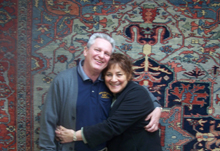
Ken and Harriet Adams
Owners of ABC
130 Cecil Malone Drive Ithaca, NY 14850
For directions, Click Here.
OPEN:
Mon through Thur-8am to 5pm, Fri-8am to 4:30pm
Weekends-1st & 3rd Saturdays10am to 1pm
ABC Oriental Rug is on Facebook!
We regularly post tips and information about your carpet, rugs, upholstery, and tile and grout so please visit us often.
We update our Facebook page with our latest discounts and we are also offering exclusive promotions to our Facebook fans. These are limited and short notice promotions.
When you like our page, you will also be able to claim your special gift from us!
"Like Us"
on Facebook
and find out
what's going on!

ABC
Carpet & Rug
Spotting Guide
Did you know that our
ABC Responsible Care Spotter
can get those pesky spots out of your carpet and will work equally as well on your clothes and upholstery?
Stop by our office and pick one up. They are $5.00 + Tax but if you have carpets or upholstery cleaned in your home or business, just request a free one from your Technician.
And don't forget to fill out the form above to download your free ABC Spotting Guide!
